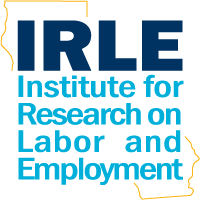Journal of Policy Analysis and Management, August 2021.
- Abstract
-
The Raise the Wage Act of 2021 (HR 603) would increase the federal minimum wage in five annual steps, from $7.25 to $15 in 2025, with annual increases thereafter indexed to the median wage. The new floor would increase pay for nearly 32 million workers, about 21 percent of the U.S. workforce (Cooper, Mokhiber, & Zipperer, 2021). Nearly one-third of Black workers and one-fourth of Hispanic workers would receive increases. The annual pay increase for year-round full-time workers would average about $3,300 and no full-time worker would earn a poverty wage.
These impressive numbers suggest that a $15 federal minimum wage would constitute a bold policy innovation. It would exceed the previous peak minimum wage— which was about $11.50 (in 2019 dollars), reached in the late 1960s, and equal about 80 percent of the median wage in the lowest-wage states. On the other hand, the current federal minimum lies 37 percent below that previous peak, and about 18 percent below its value in 2009, the year of the last federal increase.
Industrial Relations, January 2021.
- Abstract
-
Empirical work on the minimum wage typically estimates effects averaged across high- and low-wage areas. Low-wage labor markets could potentially be less able to absorb minimum wage increases, in turn leading to more negative employment effects. In this article, we examine minimum wage effects in low-wage counties, where relative minimum wage ratios reach as high as 0.82, well beyond the state-based ratios in extant studies. Using data from the American Community Survey, the Quarterly Workforce Indicators, and the Quarterly Census on Employment and Wages, we implement event study and difference-in-differences methods, estimating average causal effects for all events in our sample and separately for areas with lower and higher impacts. We find positive wage effects, especially in high-impact counties, but do not detect adverse effects on employment, weekly hours, or annual weeks worked. We do not find negative employment effects among women, Blacks, and/or Hispanics. In high-impact counties, we find substantial declines in household and child poverty. These results inform policy debates about providing exemptions to a $15 federal minimum wage in low-wage areas.
